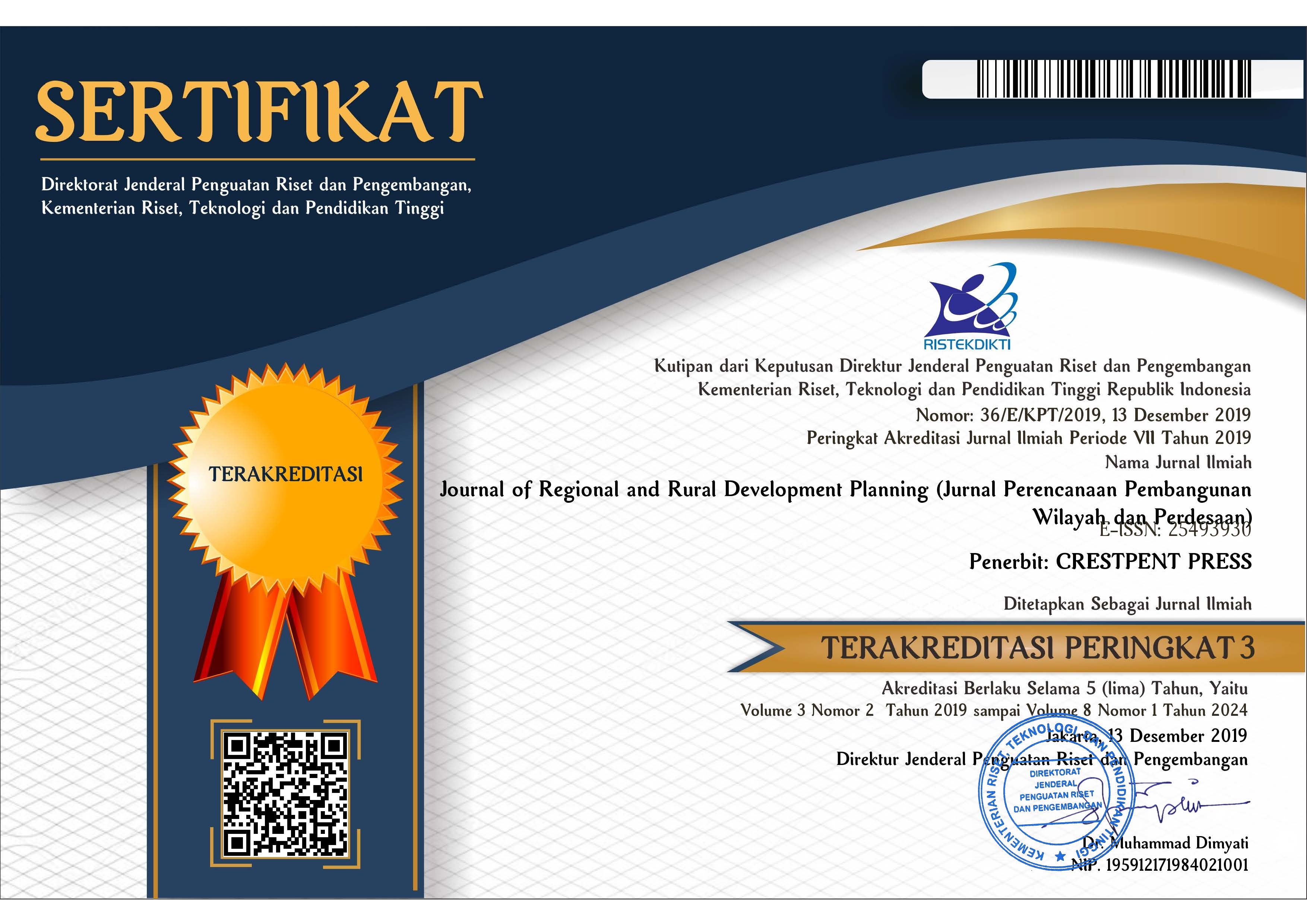Does Social Forestry Contribute to Farmers’ Income?: A Case Study of Two Mountainous Villages on Java Island, Indonesia
Abstract
Social Forestry has been implemented in Indonesia to address environmental conservation and poverty alleviation. However, the effectiveness of this initiative in increasing household income is often subject to scrutiny. This study examines the impact of Social Forestry on household income by comparing Social Forestry members and non-members in two mountainous villages on Java Island. Specifically, the analysis focuses on household surveys conducted in Tombo village in Central Java and Cibulao sub-village in West Java. A negative correlation between membership and household income is observed in Tombo, whereas a positive correlation between membership and farm income is observed in Cibulao. Considering these findings, we posit that pre-implementation land tenure and accessibility may affect the economic outcomes of the program.
References
Amaruzaman, S., Bardsley, D. K., & Stringer, R. (2022). Reflexive policies and the complex socio-ecological systems of the upland landscapes in Indonesia. Agriculture and Human Values, 39(2), 683-700.
De Royer, S., Van Noordwijk, M., & Roshetko, J. M. (2018). Does community-based forest management in Indonesia devolve social justice or social costs?. The International Forestry Review, 20(2), 167-180.
Firdaus, A. Y. (2018). Panduan Praktis Penerapan Kebijakan Perhutanan Sosial: Kerangka Pencepatan Reformasi Tenurial Hutan. Bogor: CIFOR.
[FAO] Food and Agriculture Organization. (2020). Global Forest Resources Assessment 2020: Main report. http://www.fao.org/3/ca9825en/ca9825en.pdf [Mar 17 2024].
Hardin, G. (1968). The tragedy of the commons: The population problem has no technical solution; it requires a fundamental extension in morality. Science, 162(3859), 1243-1248.
Irawanti, S., Ginoga, K. L., Prawestisuka, A., & Race, D. (2014). Commercialising Community Forestry in Indonesia: Lessons About the Barriers and Opportunities in Central Java. Small-scale Forestry, 13(4), 515-526.
Maryudi, A., & Krott, M. (2012). Poverty Alleviation Efforts through a Community Forestry Program in Java, Indonesia. Journal of Sustainable Development, 5(2), 43-53.
Meijaard, E., Santika, T., Wilson, K. A., Budiharta, S., Kusworo, A., Law, E. A., Friedman, R., Hutabarat, J. A., Indrawan, T. P., Sherman, J., John, F. A. V. S., & Struebig, M. J. (2021). Toward improved impact evaluation of community forest management in Indonesia. Conservation Science and Practice, 3(1), e189.
[MoEF] Ministry of Environment and Forestry. (2016). Peraturan Menteri Lingkungan Hidup dan Kehutanan Republik Indonesia Nomor P.83/MENLHK/SETJEN/KUM.1/10/2016 Tentang Perhutanan Sosial
[MoEF] Ministry of Environment and Forestry. (2018). Keputusan Menteri Lingkungan Hidup dan Kehutanan Republik Indonesia Nomor: SK. 8960/MENLHK-PSKL/PKPS/PSL.0/12/2018
[MoEF] Ministry of Environment and Forestry. (2019). Keputusan Menteri Lingkungan Hidup dan Kehutanan Republik Indonesia Nomor: SK. 5940/MENLHK-PSKL/PKPS/PSL.0/6/2019
[MoEF] Ministry of Environment and Forestry. (2020). The State of Indonesia’s Forests 2020. https://www.menlhk.go.id/site/single_post/4696/the-state-of-indonesia-s-forests-2020 [Mar 19 2023].
[MoEF] Ministry of Environment and Forestry. (2023). Basis Data Geospasial. https://sigap.menlhk.go.id/sigap-v3/basis-data/index?id_bidang=8&id_produsen=&search= [Mar 24 2024].
Pender, J. L., Suyanto, Kerr, J. M., & Kato, E. (2008). Impacts of the Hutan Kamasyarakatan Social Forestry Program in the Sumberjaya watershed, West Lampung District of Sumatra, Indonesia. IFPRI Discussion Paper, 00769.
Rustiadi, E., & Veriasa, T. O. (2022). Towards Inclusive Indonesian Forestry: An Overview of a Spatial Planning and Agrarian Perspective. Jurnal Manajemen Hutan Tropika, 28(1), 60-71.
Veriasa, T. O., Rustiadi, E., & Kinseng, R. A. (2020). The impact of joint community forest management (PHBM) on local community income in upstream of Ciliwung Watershed, Bogor Regency-Indonesia. IOP Conference Series: Earth and Environmental Science, 556(1), 012009.
Copyright (c) 2024 Journal of Regional and Rural Development Planning (Jurnal Perencanaan Pembangunan Wilayah dan Perdesaan)

This work is licensed under a Creative Commons Attribution-ShareAlike 4.0 International License.




.png)














